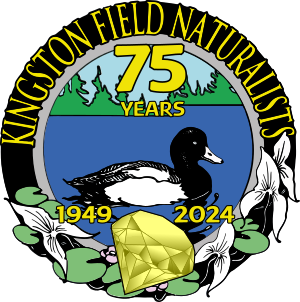Moths are a fascinating group of insects that are gaining in popularity with naturalists across North America. This is at least partially thanks to an increase in resources, both online and in print, that bring identification out of the realm of professional entomologists.
Moths and their caterpillars literally come in all sorts of colours and shapes and the diversity, so it will take a very long time before you run out of new species.
Observing moths
Moths and their caterpillars are all around us, and you don’t need much effort to start to find them. Some species are active by day and are best found by watching flowers that are in bloom, just like you would if you were looking for butterflies. However, many species are nocturnal and there are a few ways to entice them out and increase the number of moths you are seeing.
- Shine your light on a white sheet. The sheet will reflect the light as well as provide a white background for the moths to land on. This makes it easier to notice them when they show up. Apparently, cotton sheets work best as they reflect UV more effectively than artificial fabrics.
- Choose a better light bulb. Not all light bulbs are equal! Choose a bulb that transmits light in a broad spectrum, including UV. Black lights are available at Canadian Tire and most other hardware stores. Mercury Vapour bulbs are the best, and in Kingston, Petsmart sells a Mercury Vapour bulb (for reptiles) that can be used in a standard outlet. Avoid LED lights as they broadcast in a very narrow spectrum.
Moth Checklists and Reporting
There are over 3000 species of moths on the Ontario checklist and a reasonable guess would suggest that at least 2/3 of those species should occur within the Kingston Study Area with our varied habitats. We have our work cut out for us! There are over 1200 moth species verified on iNaturalist in the Kingston Study Area.
Please submit your moth observations to iNaturalist.ca to improve our understanding of moth species and distribution in the Kingston Study Area. You can also join the KFN Moths of the Kingston Study Area project on iNaturalist.
Resources
There are many excellent resources to help you learn about moths and how to study them. We recommend the following:
- Peterson Field Guide to Moths of Northeastern North America by David Beadle and Seabrooke Leckie. This is the best guide for adult moths in Ontario. The guide shows photos of live adults so you can see the distinctive shapes and postures of many species as you will encounter them in the field. The book includes most of the species you are likely to encounter but be aware that you will certainly find moths that aren’t included in the book.
- Les papillons du Québec by Louis Handfield. This is an excellent book to accompany your Peterson Guide. The text is mostly in French, but it is still well worth the purchase even if your French isn’t very good. The book focuses on Quebec so includes most of the species expected in Eastern Ontario. The plates are excellent but, unlike the Peterson guide, show pinned and spread moth specimens.
- Caterpillars of Eastern North America: A Guide to Identification and Natural History by David L. Wagner. This is the go-to identification guide for caterpillars in our area. If you are interested in caterpillars at all, this book should be at the top of your list. Internet
- Moth Photographers Group. An excellent resource for all things moth, including photos and maps, in North America.
- Bug Guide. An excellent photo and information resource for North American insects, including moths.
- Ontario Moths blog. Seabrooke Leckie’s moth blog – has many very helpful articles for getting started with mothing.
- Ontario Moths Facebook Page. Facebook page run by David Beadle with lots of news and photos posted regularly.
